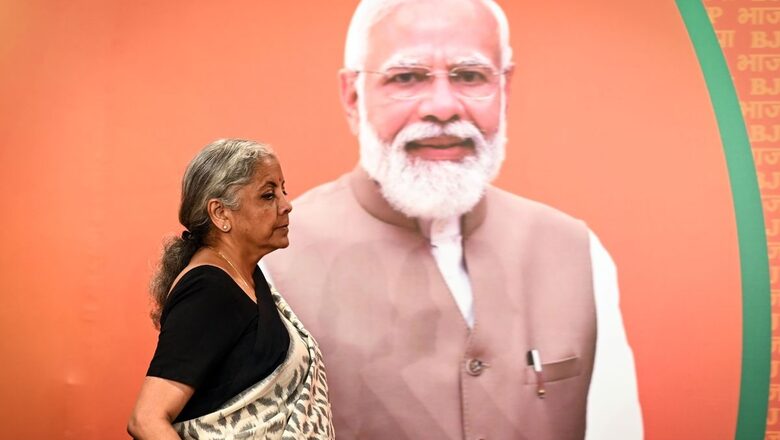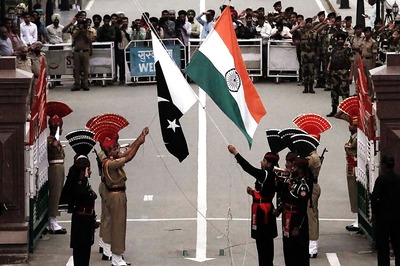
views
But, as the BJP is getting ready to take the political message to the streets, it can’t just talk on jargon like fiscal deficit, growth, or inflation. It would require big political takeaways that would support its narrative of how Prime Minister Narendra Modi inherited a doomed economy and made it a success story in less than 10 years.
Common Man’s Suffering
One of the biggest political takeaways from the White Paper was how ‘aam aadmi’ fared during the Congress-led UPA government.
Price stability is shown as a big foundation on which the two regimes are judged. “Inflation raged between 2009 and 2014 and the common man bore the brunt,” said the White Paper. While numerically one can go further about fiscal deficits, the overarching theme would be if everyday necessities cost more or less back then.
To put things more simply, the price of petrol rose 90 per cent and diesel 96 per cent during the tenure of the Congress-led UPA government against 33 per cent and 74 per cent respectively in the nine years of the Modi-led NDA government. Price rises, BJP claims, were sharper during the Congress regime. The message is loud and clear — common man is better off in the Modi era than in the Manmohan era — and will be spread by the BJP machinery.
2008 vs 2014: Loan Loophole
The comparison that is made is between the 2008 global recession and the 2014 banking deluge in India. The White Paper quoted a UPA-era finance minister saying India wasn’t as badly affected in 2008 as the rest of the world. The stimulus package was way heavier than the government could afford and went for a long time while joblessness grew and more companies continued with layoffs.
Contrastingly, the banking crisis in 2014 was “massive”, yet the Modi government sustained it. One of the reasons shown in the White Paper was ‘bad loans’ which, in financial parlance, means when a bank gives loan to an entity but it is unable to return it. The paper mentions a written response to a Parliamentary Panel by a former RBI governor where he accepted “a large number of the bad loans were originated in the period 2006-2008”.
Politically speaking, the government is hinting at how loans were given blatantly without due consideration to the likes of Vijay Mallya’s Kingfisher and former diamond tycoon Nirav Modi’s company Firestar Diamond. Both are now fugitives. Together, Modi and Mehul Choksi’s company received about a quarter of the loans made to the nation’s gems and jewellery sector. All these were allowed under the Congress regime.
Impact on Forces
At a time when the government’s big USP has been ‘ghar me ghus ke marenge’, with memories of surgical strike still fresh in the country’s minds, the government wants to take voters back in time to show an era when financial burden cost India’s defence preparedness.
“Weak leadership and consistent lack of intent and action resulted in defence under-preparedness,” says the White Paper. By 2012, the shortage of combat-ready equipment and ammunition was a “chronic issue” plaguing the forces. The long-drawn process of procuring fighter aircraft made things worse. The government is contrasting it with swift actions like the Rafale deal, with Rafale fighter aircraft already in Indian skies. “Even the decision to provide bullet-proof jackets and night vision goggles to Indian Army soldiers was kept hanging for years,” said the paper.
Such reminders coming at a time of hyper-nationalism in India will work as a major dampener for the Congress.
‘What have I got?’ Then vs Now
In a few things, nothing works better than numbers to make a comparison. A key political takeaway from Sitharaman’s paper has been the comparison of length of road construction, new IIMs built or new AIIMS delivered — tangibles that affect a normal citizen.
Here, a major boost for the Modi government in convincing aspirational India has been its start-up-friendly ecosystem — from just 350 start-ups then to 1,17,257 now. During UPA era, 25.7 thousand kilometres of National Highways were constructed while the number has now more than doubled to 54.9 thousand kilometres. Back then, there were 387 medical colleges which are now 706. Seats in medical education have doubled to 1,08,940. These are some snippets that are just not mere statistics but also reflect the aspirations of common citizens.
Remember Scam-istan?
Sitharaman dug out UPA graves to bring out the corpses of 15 scams and held it high for every Member of Parliament to see. She reminded everyone how 12 days of Commonwealth Games in 2010 couldn’t go without large-scale corruption while India witnessed a year-long successful G20 summit under Modi.
Sitharaman reminded of the Coal Block Allocation scam that reached the doorstep of then PM Dr Manmohan Singh; 2G scam that saw then telecom minister D Raja, also a Congress ally, go to jail; CWG scam that saw then Congress MP Suresh Kalmadi go to jail while Congress’s then Delhi CM Sheila Dikshit’s role was under the scanner; Aircel Maxis scam where CBI alleged that Karti Chidambaram received kickbacks for his assistance via his consulting firm Advantage Strategic Consulting Ltd. Karti’s father P Chidambaram was then finance minister and a senior Congress leader.
For anyone who may have tilted towards Rahul Gandhi’s ongoing Bharat Jodo Nyay Yatra, these 15 scam details would be enough to serve as a reminder of the Congress era.
PM Modi has already declared the target of the upcoming Lok Sabha election with his ‘400 par’ slogan and these five big political takeaways may help him, and the NDA, get there.


















Comments
0 comment